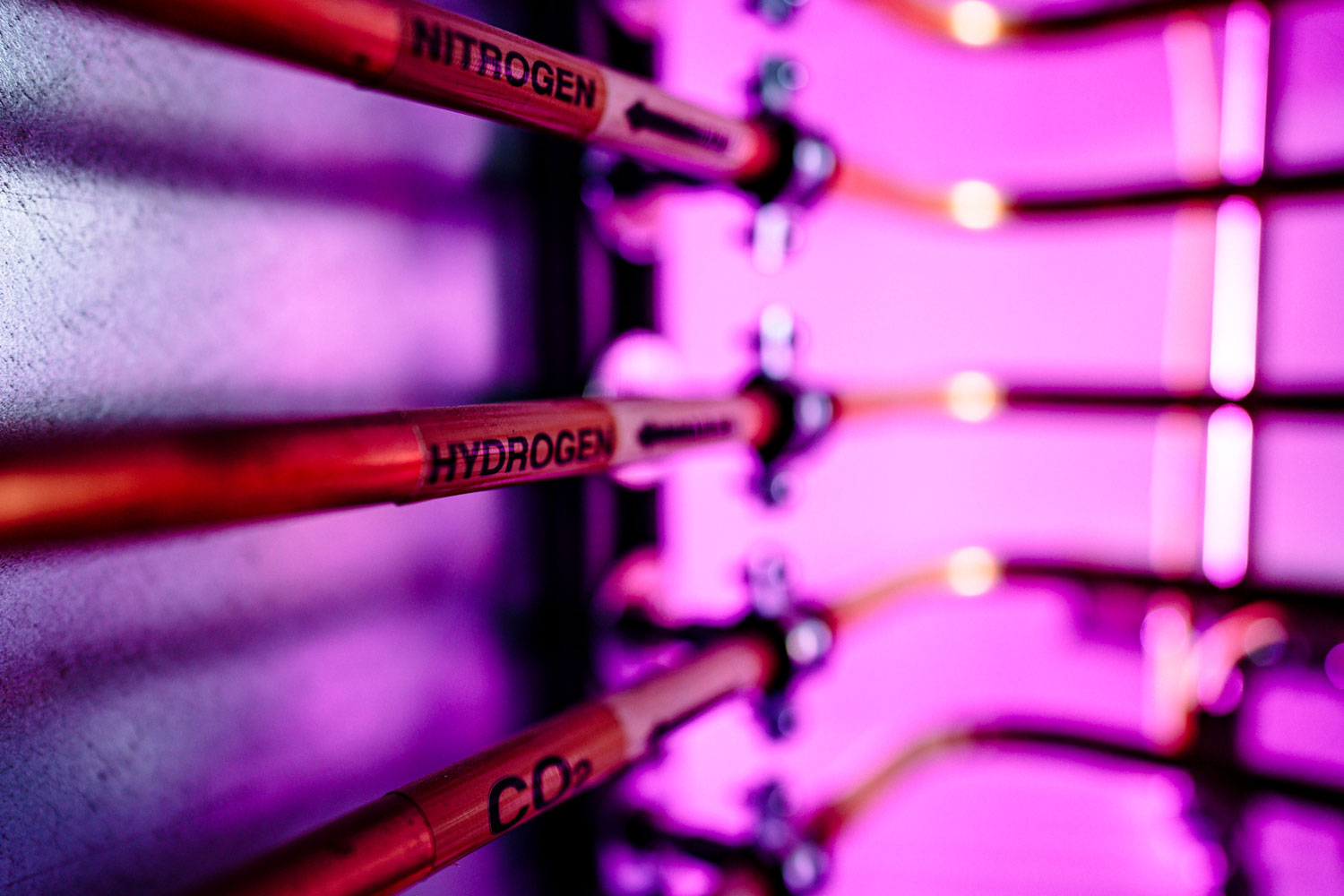Virtual technology and hydrogen
SaMI has been working with the Materials Processing Institute to test how well hydrogen works as a reductant for steelmaking.
Switching to hydrogen from fossil fuels would slash the carbon emissions from steelmaking. Mike Dowd is using virtual technology to assess hydrogen as carbon-free fuel for furnaces.
SINTEC extreme environments
The team used laboratory simulations in our SINTEC facility to get an accurate picture of how hydrogen and other materials behave in the extreme conditions of a furnace, as a first step towards piloting a new type of hydrogen-fuelled process.
SINTEC is equipped with high temperature furnaces that can test various materials systems up to 1600ºC in controlled gas atmospheres. Integrated mass balance technology enables the study of materials in both oxidising and reducing environments and with online monitoring, provides an exclusive opportunity to take a virtual look inside industrial process.
Steel in a green economy
A low-carbon green economy needs steel, for example for products such as wind turbines, trains or electric cars. Steel can also be recycled infinitely, with no loss of quality.
However, the process of manufacturing steel remains carbon-intensive, despite major improvements by the sector in recent years. 6% of global carbon emissions come from the ironmaking process alone. A single blast furnace produces 5 million tonnes of carbon each year.
This is why the SaMI’s focus on hydrogen as a fuel for furnaces has such enormous potential to cut emissions.
Hydrogen reduction on an industrial scale
We looked specifically at a process known as reduction, which means removing oxygen from a material.
At present, iron is reduced in the furnace using carbon monoxide from coke, a coal-based fuel, which attracts the oxygen from the iron ore. The result is that the iron ore becomes pure iron, ready for steelmaking. The flip side, however, is that the carbon monoxide, with the extra oxygen atom added, becomes carbon dioxide – CO2 – and adds to the emissions that are worsening the climate crisis.
If hydrogen could be used to reduce the iron, instead of carbon monoxide, it would drastically reduce carbon emissions from steelmaking.
The team examined how materials behaved in the hydrogen reduction process. To do this, they used the reducibility rig, which simulates what happens to materials at very high temperatures in gas-laden environments.
Switching to hydrogen as a reducing agent for steelmaking would slash carbon emissions. Our work tested how this technology could work, before we start the next phase of this project.
The reducibility rig in Swansea allows us to take a virtual look at the hydrogen reduction process could work on an industrial scale. It means we get a full picture of how materials behave in extreme conditions. We also compare hydrogen with carbon-heavy fuel sources.
Future of hydrogen in steelmaking
With investment, the new hydrogen furnace technology could replace the need for blast furnaces altogether.
The tools we are using and our links with industry mean that this project could scale up these technologies for commercial use quite quickly. This is crucial as we all know that time is of the essence in the drive to cut carbon emissions.
Contributor Mike Dowd
February 2023
